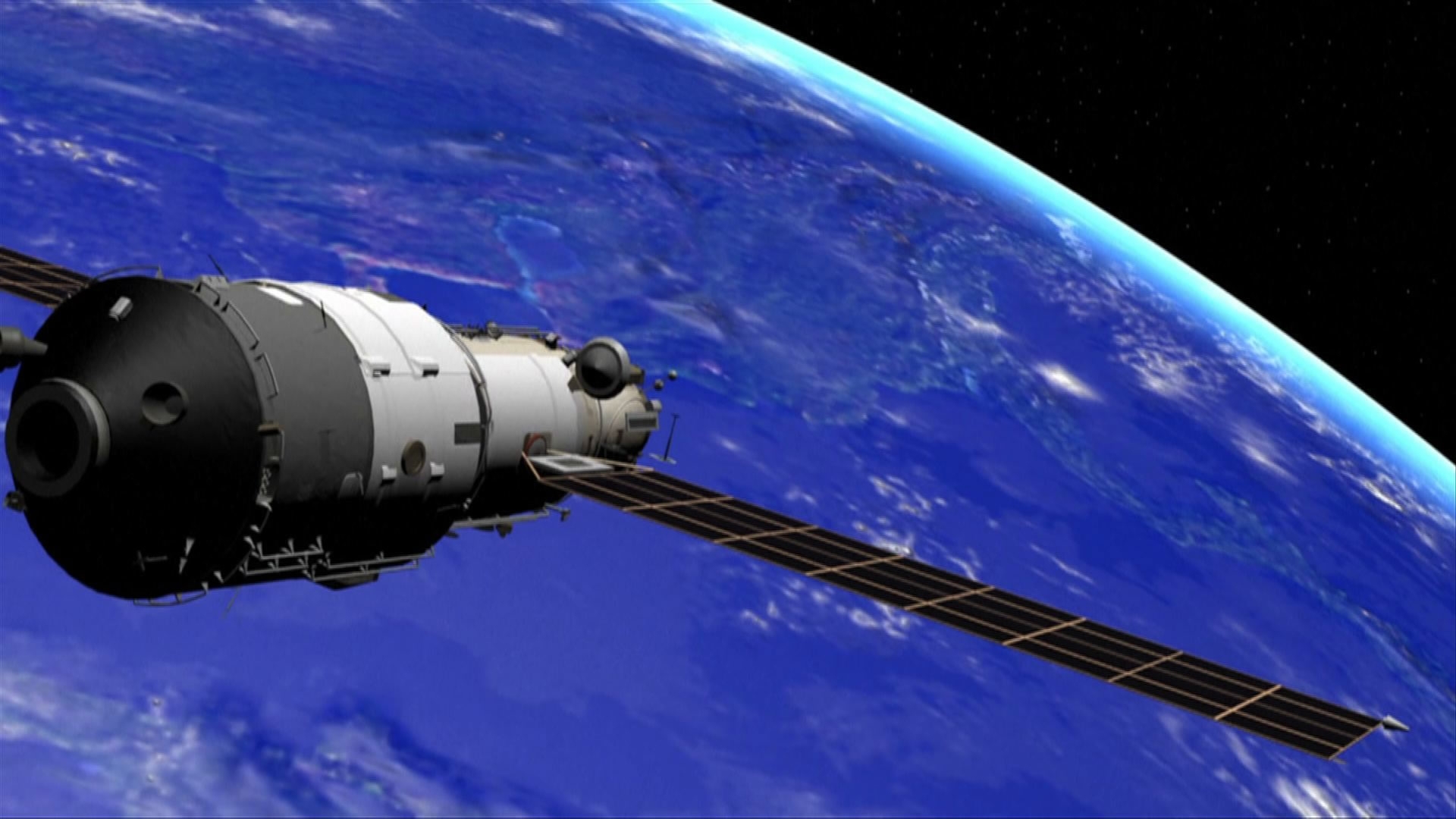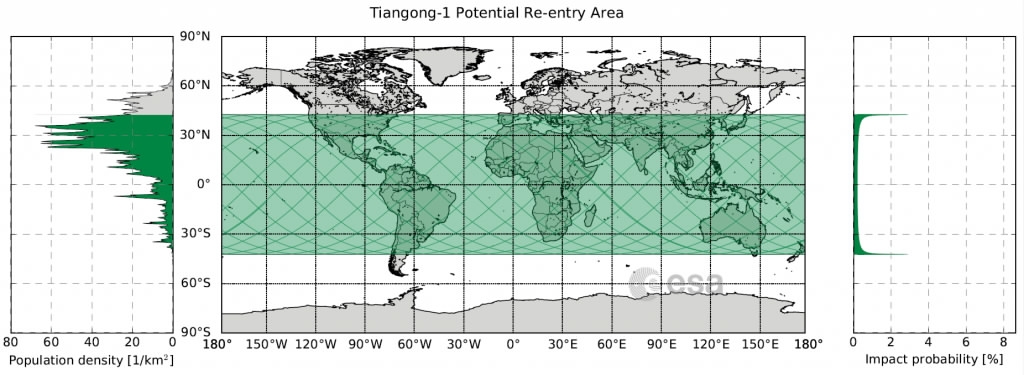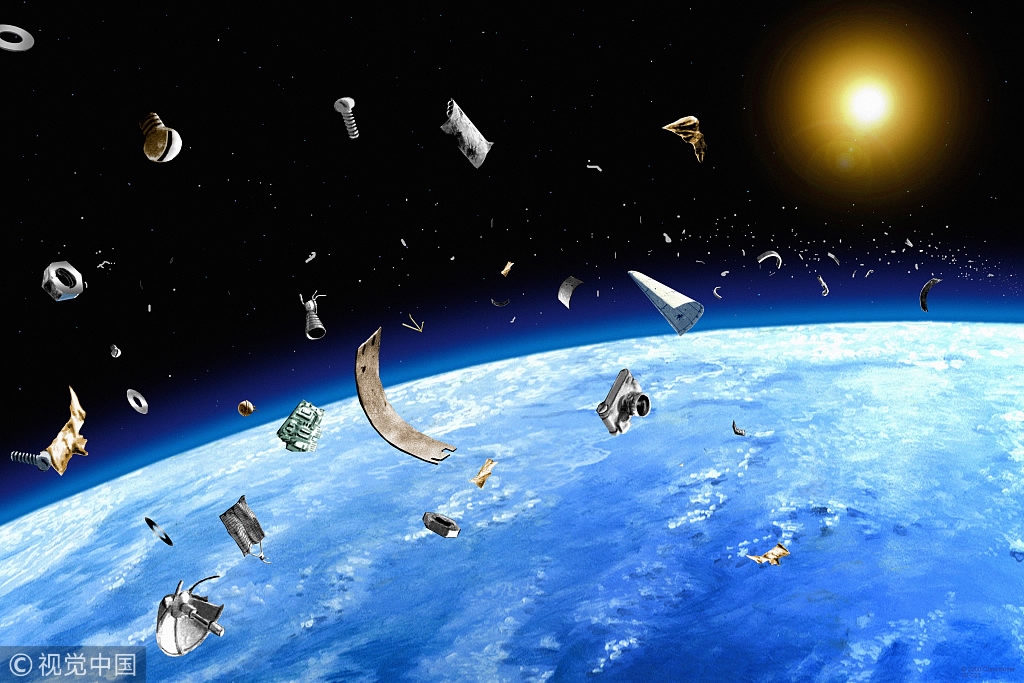
Space
13:17, 27-Mar-2018
Odds of being hit by Tiangong-1 debris are minuscule
By Guo Meiping

Tiangong-1, China's first space station, should burn up completely as it reenters the Earth's atmosphere, according to the China Manned Space Engineering Office (CMSEO) on Monday.
Analysis from the Beijing Aerospace Control Center shows that Tiangong-1 will reenter the Earth's atmosphere between March 31 and April 4.
Reentry will take place between 43ºN and 43ºS, areas above or below these latitudes can be excluded, according to the European Space Agency (ESA)’s prediction.

European Space Agency Photo
European Space Agency Photo
Tiangong-1 orbited at an average altitude of 216.2 kilometers and was fully intact as of March 25, according to CMSEO.
Tiangong-1 was launched on September 29, 2011, and ended its service on March 16, 2016, after completing its mission.
Will debris of Tiangong-1 fall on our heads?
Concerns have been raised about Tiangong-1’s return regarding whether remaining parts of the aircraft could pass through the atmosphere and hurt people on the ground.

The odds of being hit by space debris from space is minuscule. /Photo via VCG
The odds of being hit by space debris from space is minuscule. /Photo via VCG
It might sound scary but the odds of it happening is actually minuscule.
According to the Aerospace Corporation, a non-profit research organization, there is less than a one in one-trillion chance that a person will be harmed by falling space debris.
“In general terms, the likelihood of a person being hit by a piece of space debris is lower than the likelihood of being hit by lightning twice in the same year,” Holger Krag, head of ESA’s Space Debris Office, said in an ESA blog post.
(With inputs from Xinhua)

SITEMAP
Copyright © 2018 CGTN. Beijing ICP prepared NO.16065310-3
Copyright © 2018 CGTN. Beijing ICP prepared NO.16065310-3